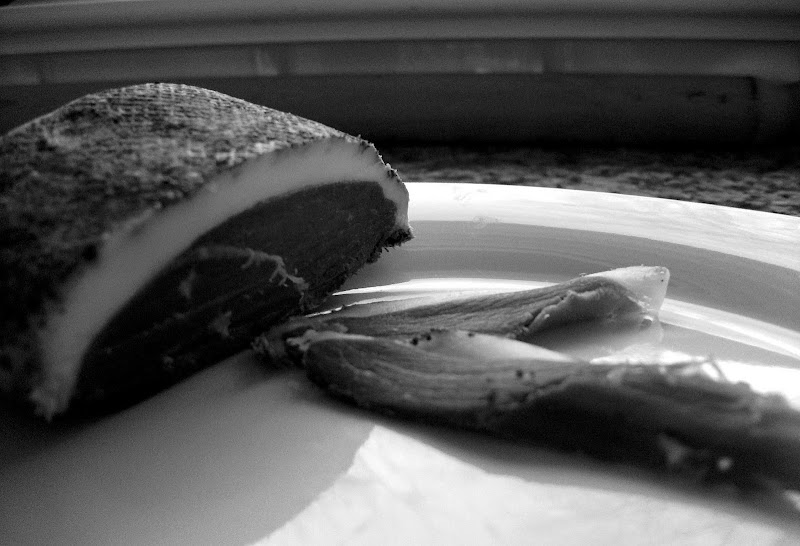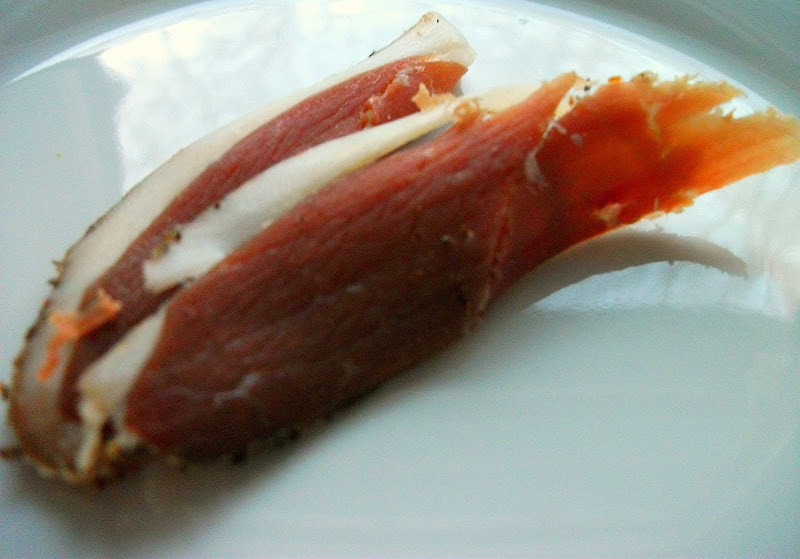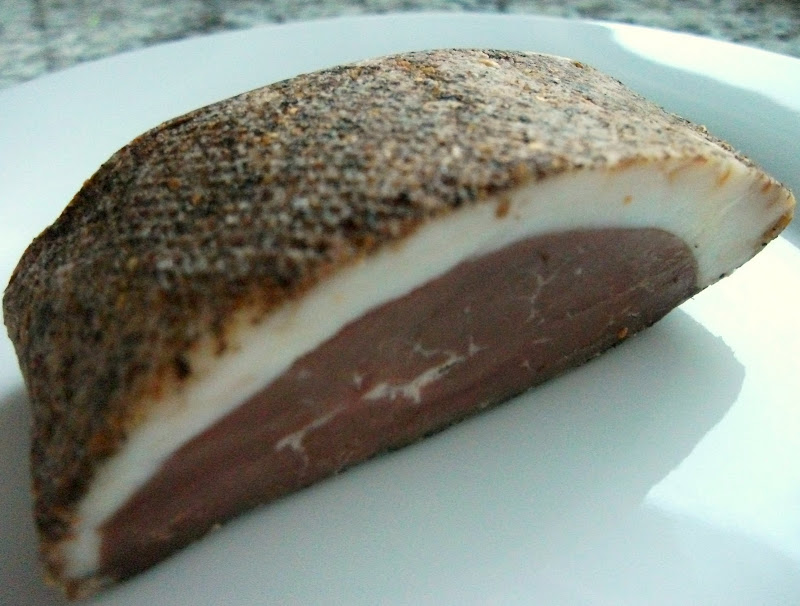
(photo: some of Dr. K.’s homemade duck prosciutto sliced thin and eaten with bread and Prosecco)
I’m a big believer in chasing happiness in life and not the 30 minute kind that’s associated with a new car, electronic device, or a bigger house (sorry all you hedge fund managers and Goldman employees). Happiness, after all (and there’s empirical evidence for this) is derived from things like time with family, meaningful friendships, social outings, and travel. I’d also equate eating well with happiness as time with family and most meaningful social interactions inevitably include food and drink.
One food type that brings great joy to both my taste buds and mental state is cured meat. Cured meat, when done well, is one of the greatest representations of food on the planet (and also one of the most primitive). Curing (and smoking) meat dates back to the Ancients and in the United States Native Americans smoked meat by way of hanging it on their teepees (the smoke from their fire would do the preserving). My own family in Calabria has been curing whole muscle pork and salame for a couple of hundred years and it’s a food product that I grew up with and continue to enjoy fiendishly.

(photo: close up of thinly sliced duck prosciutto )
Recently our good friend Dr. K began curing duck prosciutto and we was gracious enough to share some with our family during a dinner party. The prosciutto had great texture (softer than Prosciutto di Palma or Serrano ham), wonderful fat content, and good salt / spice balance. The one negative to duck prosciutto is that it doesn’t have the depth of flavor found in other whole muscle cured meats like pancetta, capicola, or Prosciutto di Palma (I think this is just inherent to duck meat versus pork and not a criticism of Dr. K.’s fabulous work).
Dr K. utilized Ruhlman’s method found in the seminal book, Charcuterie; Ruhlman summarizes his method here:
“…but it’s no more difficult than this: pack one duck breast in kosher salt, cover and refrigerate 24 hours. Remove from salt, rinse it, dry it, wrap in cheesecloth and hang for a week or so. A general rule is dry-cured products are done when they lose 30% of their weight. If you’re concerned, weigh your breast before you hang to dry and record the weight.”
If you haven’t noticed, cured meats have become fashionable again in the high end food world (and on the web) and based on Ruhlman’s book a movement has begun to try and replicate some of the recipes on a per month basis, as ACookBlog elegantly mentions (click here to see who’s doing what). All in all, Charcuterie (French for prepared meat products) is gaining momentum in the US and it’s what can easily elevate the status of food and food consumption in the United States (great foods, and the desire to make them, get passed along and that’s how food culture changes both on a mass scale and family by family).
Here are some photos from Dr. K’s process:
(photo: locally grown duck breast from PA)
(photo: salt cure)
(photo: the wrap)
(photo: hang in a cool dry spot for 1-1.5 weeks)


(photo: spices including black pepper, red pepper flake, etc.)

